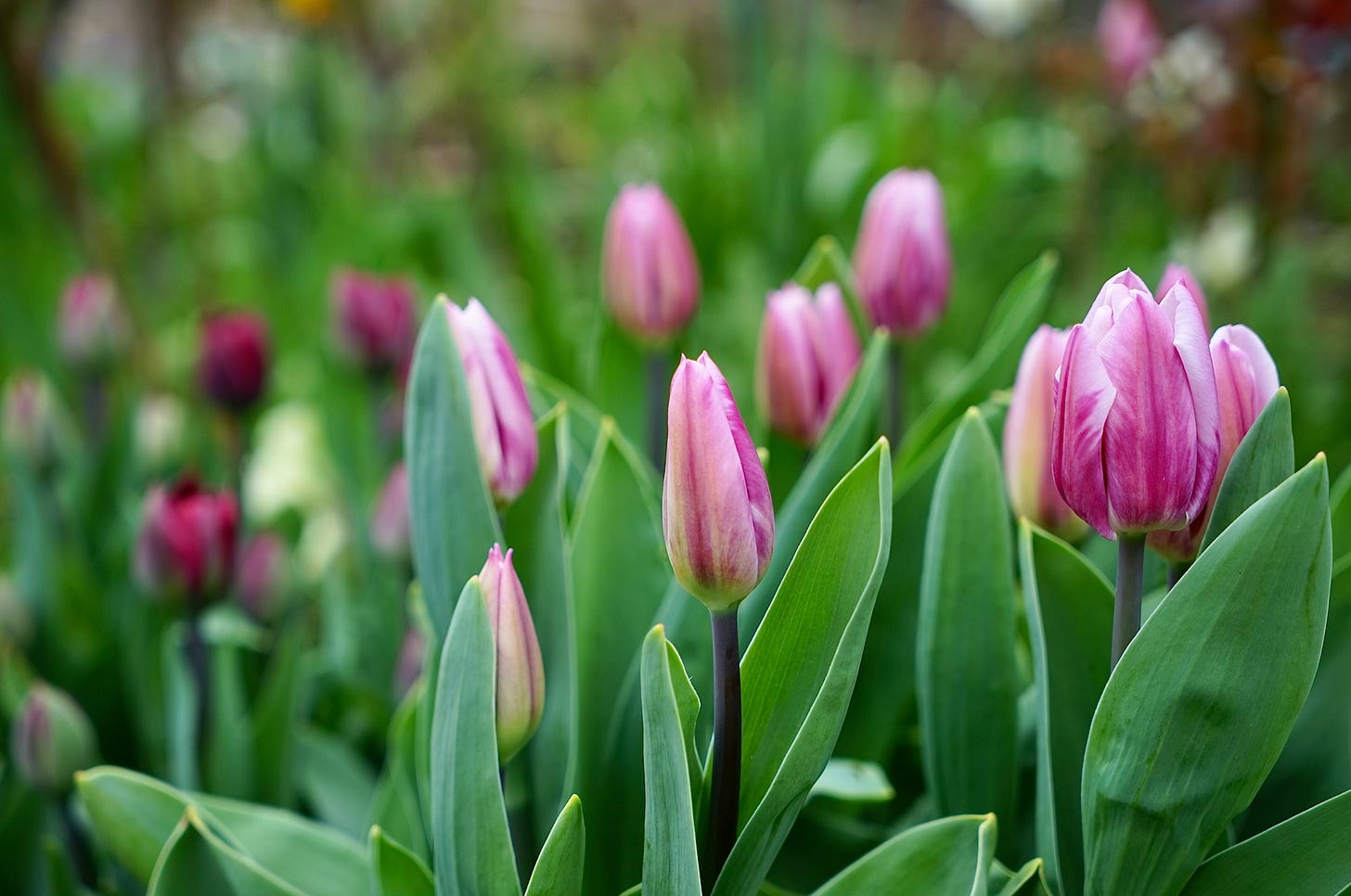The 2025 tulip collections. Plus: Storecupboard basics 3 - essential gardening tips and tricks
This week: demystifying annuals and perennials, new bulb collections, a book giveaway, hot yellows in the garden, and a garden design trick
I’ve designed four brand new tulip collections for you, all of which were still available at the time of publication.
In this week’s HOW TO GARDEN section we’ll be taking a look at some more Storecupboard basics: if you’re a beginner gardener and you’re wondering about the difference between annuals, biennials and perennials, it’s all explained here for you.
Before the Small Garden Design course starts again, I’m revisiting a design trick which will help bring attention to areas of your garden
Plant list of the week: Hot yellow is the colour of September - I’ve broken down a planting design so that you can see how you might actually be able to use this colour in the garden. Will I convert the hot yellow doubters….?
There’s another book giveaway of another of my all-time absolute favourite, indispensable garden bibles. If you’re a paid subscriber, just let me know in the comments below if you’d like to have a chance of receiving this book.






